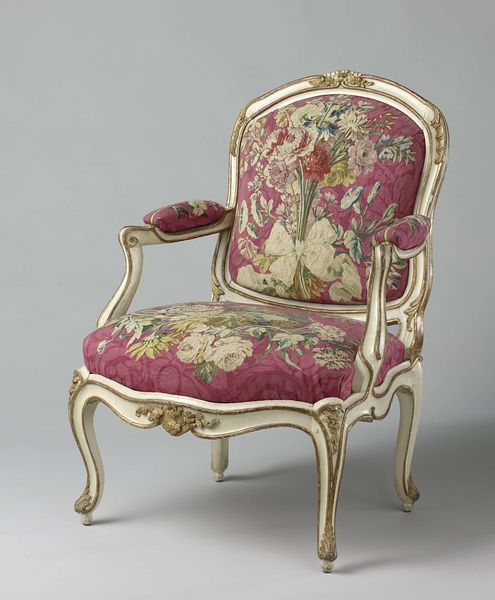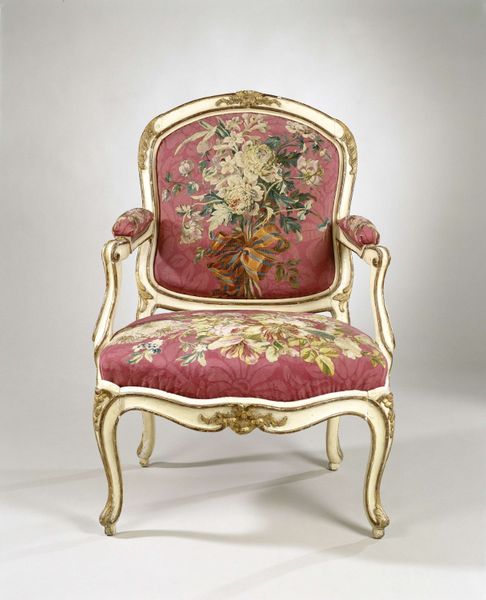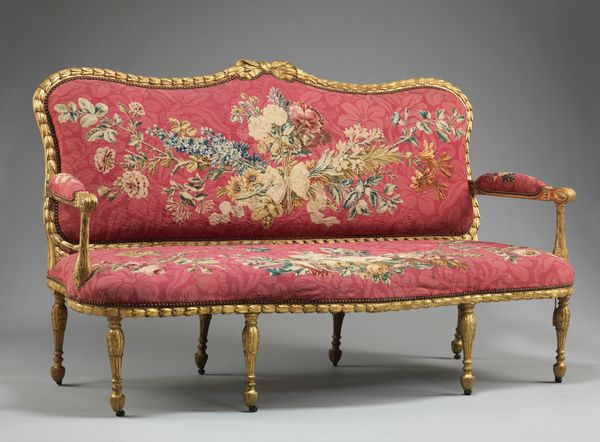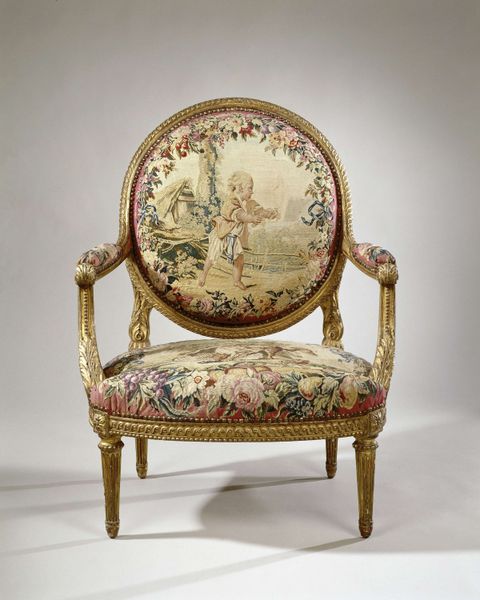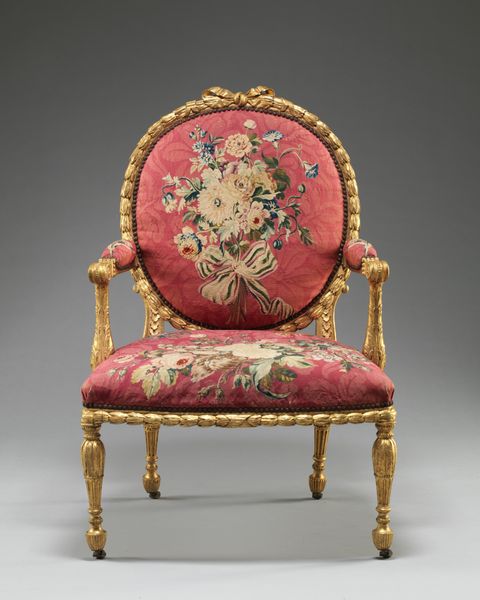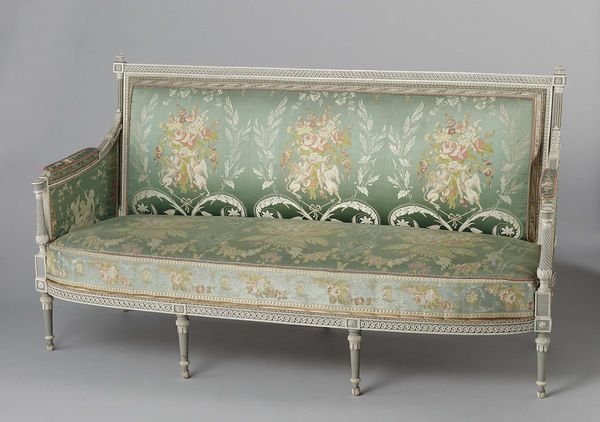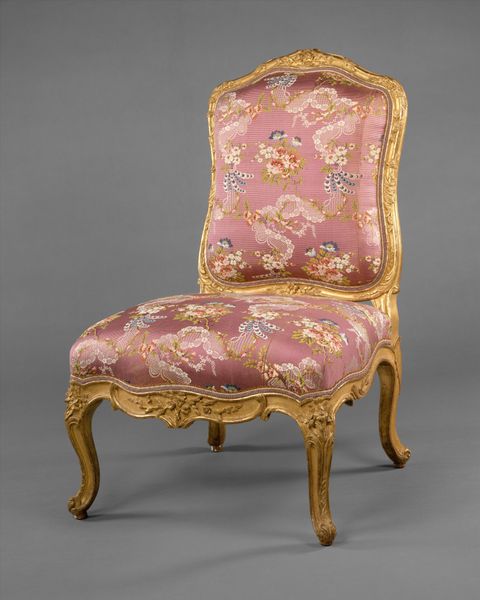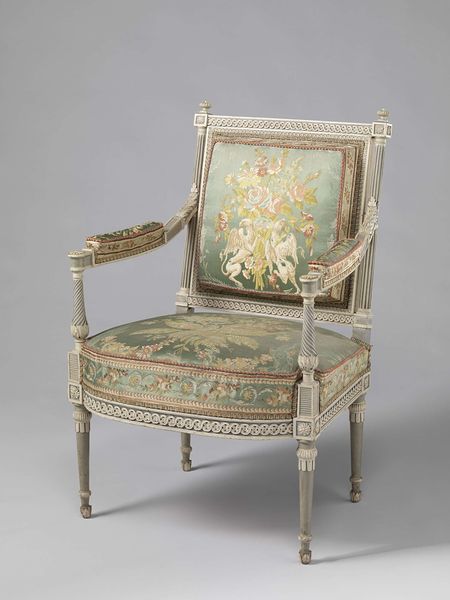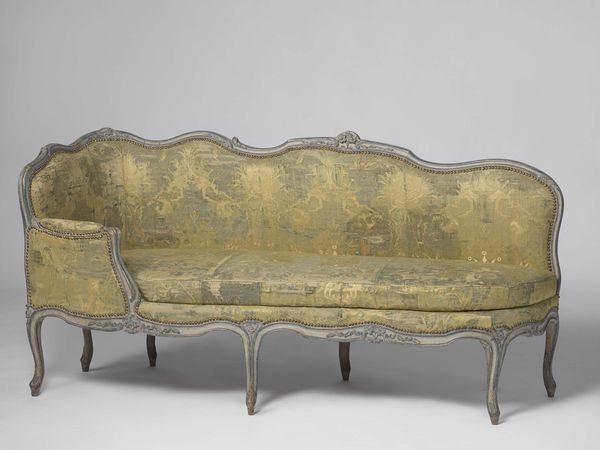
weaving, textile, wood
#
decorative element
#
weaving
#
furniture
#
textile
#
ceramic
#
wood
#
decorative-art
#
decorative art
#
rococo
Dimensions: height 103 cm, width 186.5 cm, depth 84 cm, height 46 cm, depth 61 cm
Copyright: Rijks Museum: Open Domain
Curator: Well, isn't this a delight! Immediately, I'm drawn to the sheer opulence – it practically exudes aristocratic leisure. Editor: Indeed! The sofa, or 'canapé' as it was likely known then, dates from around 1750 to 1770. Look closely, and you'll see it's upholstered with tapestry, showcasing elaborate bouquets. The carved wood frame adds another layer of refinement. Curator: Those flowers… They speak of love, life, luxury, the ephemeral nature of beauty, I suppose. Were certain blooms favored during this era, do you think, conveying specific sentiments to the owner or visitors? Editor: Precisely! During this period, the language of flowers, or floriography, became quite popular. Roses symbolized love, lilies purity, and so forth. A bouquet like this wasn’t merely decorative; it was a carefully constructed message reflecting social standing. These objects tell complex stories about the patron, their desires, tastes, or cultural aspirations. The presence of those objects shaped how courtly society functioned and displayed its values. Curator: Fascinating to think that what appears purely decorative was, in reality, quite strategic! Rococo certainly was not a democratic or egalitarian visual language. Does the maker of the piece remain unknown? Editor: Regrettably, yes. It is attributed to an anonymous master. This brings us back to those decorative elements you astutely noticed earlier. Beyond mere beauty, floral patterns were often tied to cultural identity, acting almost like visual emblems. I believe the overall intent was to project an image of sophistication, a deep understanding of visual cues, and participation in the aristocratic theater of display. Curator: The object becomes a symbol… almost more important than its mere functionality. An interesting dance between function and symbol, wouldn't you agree? This sofa served as both an intimate retreat and a proclamation of wealth, status, taste. Editor: It’s an intricate weaving of aesthetic appeal and socio-political function – both on display here! Curator: This conversation made me see this sofa a new way, it is much more than a simple piece of Rococo furniture. Editor: Indeed! A tangible fragment of a bygone era of intricate cultural symbolism.
Comments
No comments
Be the first to comment and join the conversation on the ultimate creative platform.
